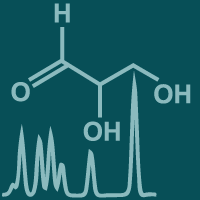Topic Menu
► Topic MenuTopic Editors

Metals in Plant Metabolism and Physiology
Topic Information
Dear Colleagues,
Metals are involved in many processes in all living organisms, including plants. Despite the essential role of metals (microelements), some metal elements are not essential and are toxic even at low concentrations. The effect of metals on molecular, biochemical and physiological processes in plants is therefore still a subject of research, particularly in the context of climate change and industrial pollution. This Topic welcomes manuscripts focusing on the effect of essential or toxic metals on metabolic and physiological changes occurring in plants, from molecular to whole-organism changes and from basic to applied research. Both laboratory and field studies are welcome.
Dr. Jozef Kováčik
Dr. Ildikó Matušíková
Topic Editors
Keywords
- metals
- biochemistry
- molecular biology
- phytoremediation
- plant metabolism
Participating Journals
| Journal Name | Impact Factor | CiteScore | Launched Year | First Decision (median) | APC |
|---|---|---|---|---|---|

Biology
|
4.2 | 4.0 | 2012 | 18.7 Days | CHF 2700 |

Current Issues in Molecular Biology
|
3.1 | 2.4 | 1999 | 13.5 Days | CHF 2200 |

International Journal of Molecular Sciences
|
5.6 | 7.8 | 2000 | 16.3 Days | CHF 2900 |

Metabolites
|
4.1 | 5.3 | 2011 | 13.2 Days | CHF 2700 |

Plants
|
4.5 | 5.4 | 2012 | 15.3 Days | CHF 2700 |

MDPI Topics is cooperating with Preprints.org and has built a direct connection between MDPI journals and Preprints.org. Authors are encouraged to enjoy the benefits by posting a preprint at Preprints.org prior to publication:
- Immediately share your ideas ahead of publication and establish your research priority;
- Protect your idea from being stolen with this time-stamped preprint article;
- Enhance the exposure and impact of your research;
- Receive feedback from your peers in advance;
- Have it indexed in Web of Science (Preprint Citation Index), Google Scholar, Crossref, SHARE, PrePubMed, Scilit and Europe PMC.


